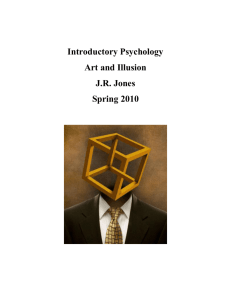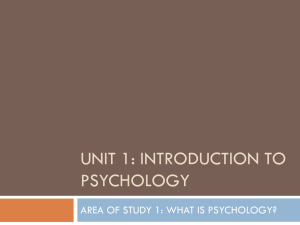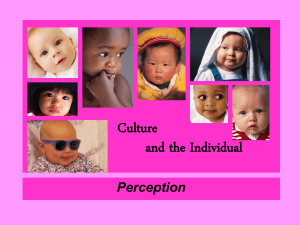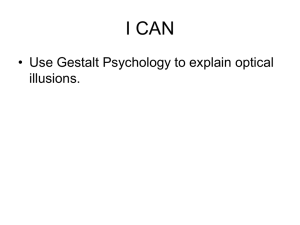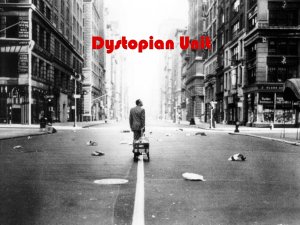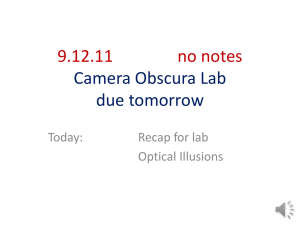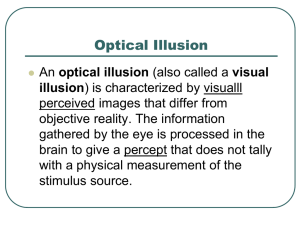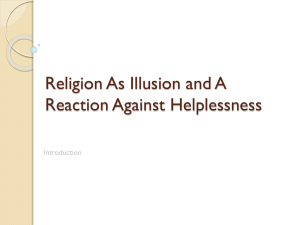Starter
advertisement
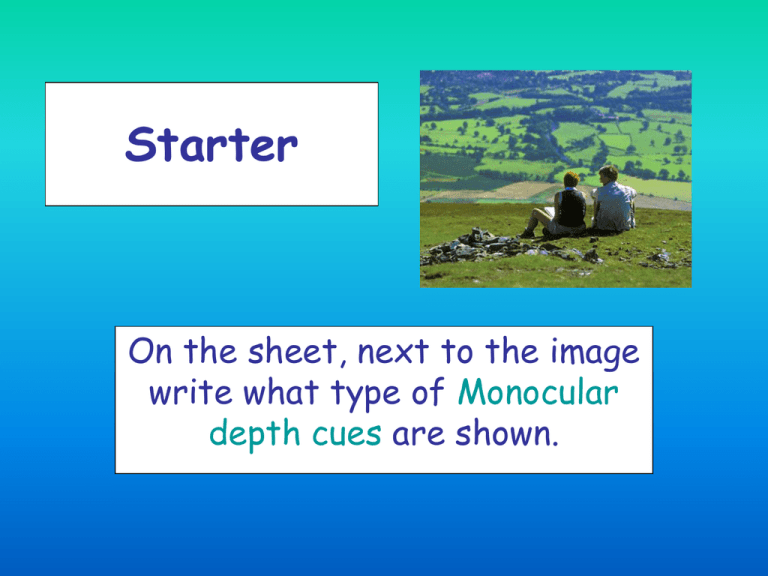
Starter On the sheet, next to the image write what type of Monocular depth cues are shown. Learning Objectives • To understand and evaluate Gregory’s theory of illusions. • To understand the experimental method. Success Criteria • To present an evaluation of Gregory’s theory. • To write a definition of the Muller-Lyer experiment Gregory’s Theory of Illusions • To understand this theory you need to make sure you clearly understand – Size Constancy. – Monocular Depth Cues. – Binocular Depth Cues. Depth Cues • REMEMBER: When we judge an object to be far away, we scale it up because distant objects make small images on the retina. • Nearby objects are scaled down because they make a large image on the retina. • This is how we maintain the relative size of objects regardless of their distance from us. Gregory’s Theory of Illusions • Look back to Linear perspective: What is it? • Linear Perspective is a depth cue. • It is the apparent meeting of a set of parallel lines in the distance. • Distortion illusions often include angled lines. Gregory’s Theory of Illusions • Look at the radiating lines of the Hering illusion to the right. • According to Gregory, we interpret the patterns in illusions as if they were depth cues. We then apply size constancy scaling and distort our perception. • Copy down the above point into your book, Title: Gregory’s theory. Hering Illusion • Stick the image of the Hering Illusion in your book, in the centre of the top of your page, giving it a title. The Hering Illusion • If the radiating lines act as linear perspective cues then we would use constancy scaling as if the scene really had depth. • The person who appear ‘furthest away; would be scaled up so they look bigger. • The person who appears closest would be scaled down, and look smaller. • This is exactly what we see. • Now label this on your picture. Gregory’s Theory of Illusions • Basically: the interpretation of depth cues can cause us to experience illusions, for example the Ponzo illusion (left) and Hering illusion. (draw images) The Muller-Lyer Illusion • Investigate the Muller-Lyer the • illusion, Write a answering brief explanation of following questions in your the Muller-lyer illusion books, in FULL sentences: – Which depth cues does the • Basically: (draw image) linear Muller-Lyer illusion play on? perspective and constancy – Explain how these cues scaling cause us todepth perceive ‘normally’ andthan theshould left work line as shorter theexplain righthow line.they affect the illusion. Evaluating Gregory’s theory • Prepare an argument evaluating Gregory’s theory. • You must include both sides of the argument (for and against) and include a conclusion. Learning Objectives • To understand and evaluate Gregory’s theory of illusions. • To understand the experimental method. Success Criteria • To present an evaluation of Gregory’s theory. • To write a definition of the Muller-Lyer experiment Plenary • Is this inside or outside the book, explain how Gregory’s theory would explain this distortion illusion. It could be either, Gregory would say that the angled lines are interpreted as a three dimensional figure. The Angled lines could point forwards or backwards.
